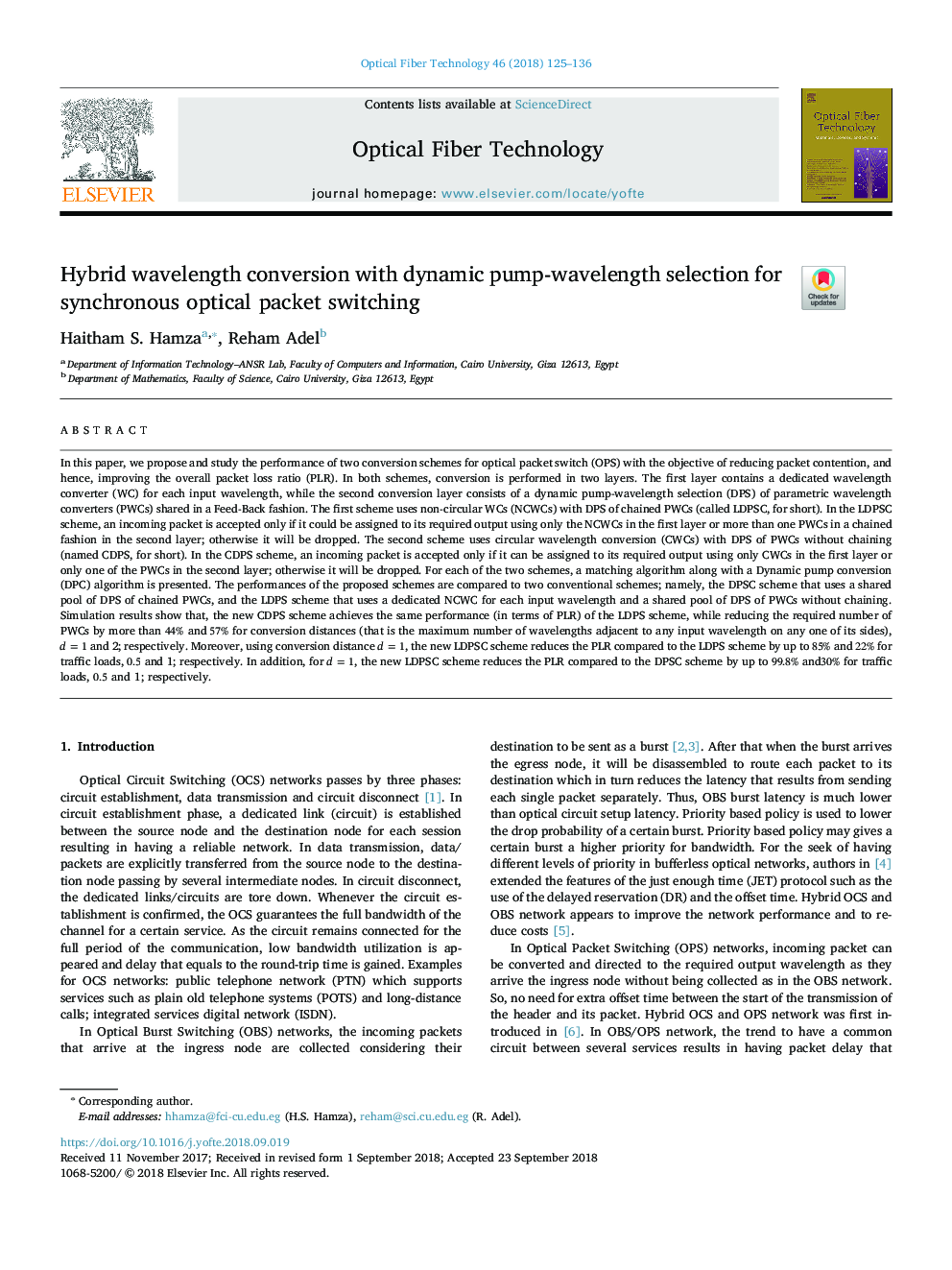| کد مقاله | کد نشریه | سال انتشار | مقاله انگلیسی | نسخه تمام متن |
|---|---|---|---|---|
| 11023953 | 1701218 | 2018 | 12 صفحه PDF | دانلود رایگان |
عنوان انگلیسی مقاله ISI
Hybrid wavelength conversion with dynamic pump-wavelength selection for synchronous optical packet switching
ترجمه فارسی عنوان
تبدیل طول موج هیبریدی با انتخاب پهنای باند پویا برای سوئیچینگ بسته های نوری همزمان
دانلود مقاله + سفارش ترجمه
دانلود مقاله ISI انگلیسی
رایگان برای ایرانیان
موضوعات مرتبط
مهندسی و علوم پایه
مهندسی کامپیوتر
شبکه های کامپیوتری و ارتباطات
چکیده انگلیسی
In this paper, we propose and study the performance of two conversion schemes for optical packet switch (OPS) with the objective of reducing packet contention, and hence, improving the overall packet loss ratio (PLR). In both schemes, conversion is performed in two layers. The first layer contains a dedicated wavelength converter (WC) for each input wavelength, while the second conversion layer consists of a dynamic pump-wavelength selection (DPS) of parametric wavelength converters (PWCs) shared in a Feed-Back fashion. The first scheme uses non-circular WCs (NCWCs) with DPS of chained PWCs (called LDPSC, for short). In the LDPSC scheme, an incoming packet is accepted only if it could be assigned to its required output using only the NCWCs in the first layer or more than one PWCs in a chained fashion in the second layer; otherwise it will be dropped. The second scheme uses circular wavelength conversion (CWCs) with DPS of PWCs without chaining (named CDPS, for short). In the CDPS scheme, an incoming packet is accepted only if it can be assigned to its required output using only CWCs in the first layer or only one of the PWCs in the second layer; otherwise it will be dropped. For each of the two schemes, a matching algorithm along with a Dynamic pump conversion (DPC) algorithm is presented. The performances of the proposed schemes are compared to two conventional schemes; namely, the DPSC scheme that uses a shared pool of DPS of chained PWCs, and the LDPS scheme that uses a dedicated NCWC for each input wavelength and a shared pool of DPS of PWCs without chaining. Simulation results show that, the new CDPS scheme achieves the same performance (in terms of PLR) of the LDPS scheme, while reducing the required number of PWCs by more than 44% and 57% for conversion distances (that is the maximum number of wavelengths adjacent to any input wavelength on any one of its sides), d=1 and 2; respectively. Moreover, using conversion distance d=1, the new LDPSC scheme reduces the PLR compared to the LDPS scheme by up to 85% and 22% for traffic loads, 0.5 and 1; respectively. In addition, for d=1, the new LDPSC scheme reduces the PLR compared to the DPSC scheme by up to 99.8% and30% for traffic loads, 0.5 and 1; respectively.
ناشر
Database: Elsevier - ScienceDirect (ساینس دایرکت)
Journal: Optical Fiber Technology - Volume 46, December 2018, Pages 125-136
Journal: Optical Fiber Technology - Volume 46, December 2018, Pages 125-136
نویسندگان
Haitham S. Hamza, Reham Adel,
